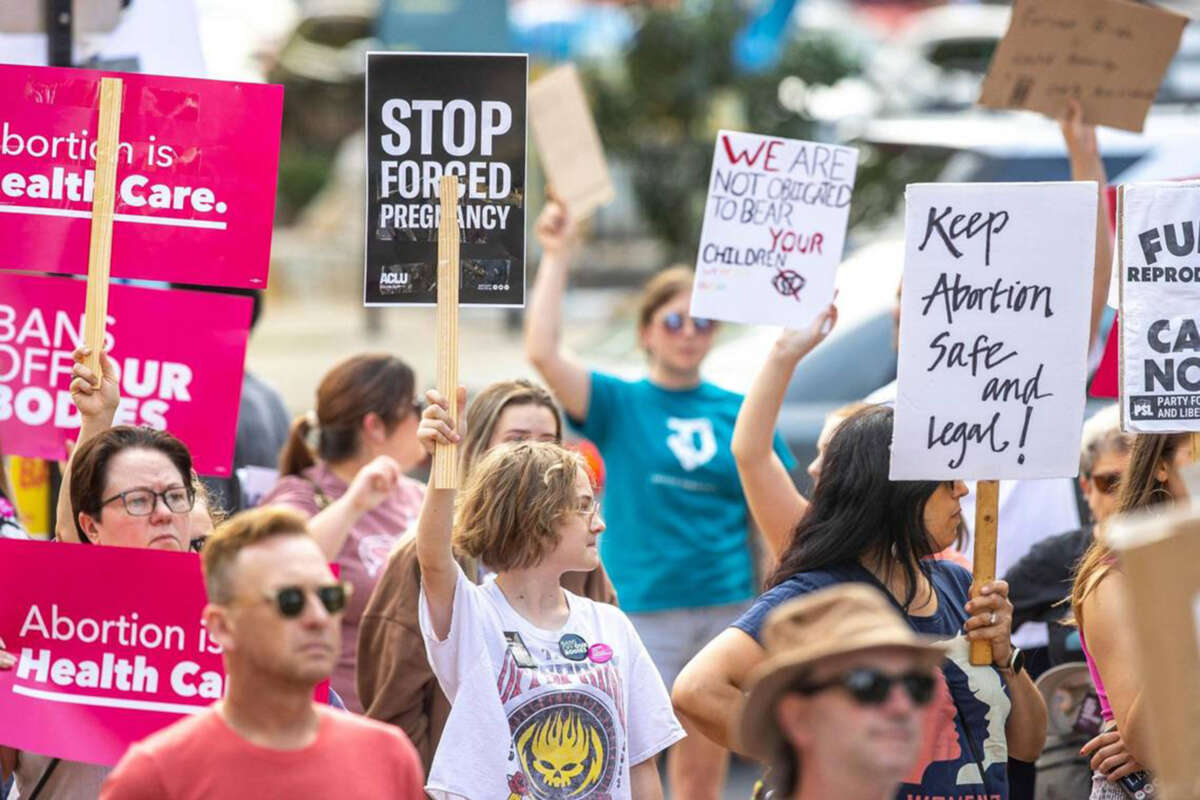New research published by the IZA Institute of Labor Economics found that states with abortion bans saw an increase in births in the first half of 2023, as compared to states where abortion remains legal.
“Our primary analysis indicates that in the first six months of 2023, births rose by an average of 2.3 percent in states enforcing total abortion bans compared to a control group of states where abortion rights remained protected, amounting to approximately 32,000 additional annual births resulting from abortion bans,” the report states. “These effects vary across demographic groups and tend to be larger for younger women and women of color.”
Researchers studied 13 states with abortion bans and found that Texas had an 18,594 increase in births, Louisiana had a 1,806 increase in births, and Kentucky had a 1,762 increase in births. The study also found that Texans seeking an out-of-state abortion were forced to travel an average of 452.9 miles.
Forty-three states currently restrict abortion after a certain point in pregnancy and 14 states outright ban the procedure. Nearly 25 million women are affected by state abortion restrictions, forcing them to seek abortions out of state or even in other countries. Data collected by the Guttmacher Institute shows that interstate travel for abortion care has doubled since 2020 and that, in the first six months of 2023, nearly one in five abortion patients traveled out of state to obtain abortion care. Additionally, the number of abortions in states where abortion is legal that border states with abortion bans soared in the first half of 2023.
Despite the increase in abortions in border states, the Society of Family Planning found that in the six months after Roe v. Wade was overturned, there were around 32,000 fewer abortions than expected in the U.S. This could be because of legislative attempts to restrict interstate abortion travel. In April, Idaho signed an “abortion trafficking” bill into law, though the law is currently on hold while a legal challenge to the law moves through the courts; meanwhile, some towns and counties in Texas have passed local ordinances that bar pregnant Texans from traveling to access an out-of-state abortion.
Many pregnant people don’t just face potential legal challenges for seeking an out-of-state abortion — they also face monetary barriers. In addition to the cost of an abortion, people may face expensive travel costs, including hotel costs, lost wages and child care. Because of these obstacles, abortion bans disproportionately harm people of color and others who face obstacles to health care and disproportionate criminalization, such as young people, transgender people, migrants and asylum seekers, and people with disabilities.
In April, Human Rights Watch and a number of other reproductive and human rights organizations released a brief regarding the human rights crisis posed by abortion restrictions in the U.S. The brief explains that women of color and other marginalized populations are more likely to fall below the poverty line than white women and therefore may be unable to afford abortions out of state. Additionally, marginalized people are less likely to have paid time off or paid sick leave, and could be fired from their jobs if they take time off to get an abortion.
“The US has violated its human rights commitments by removing constitutional protection for reproductive healthcare. The Dobbs decision subjects all those who can become pregnant to barriers to medical care, criminalization and penalization, infringements on privacy and on freedom of conscience, with disproportionate impact on already-marginalized population,” the brief says.
48 Hours Left: All gifts to Truthout now matched!
From now until the end of the year, all donations to Truthout will be matched dollar for dollar up to $28,000! Thanks to a generous supporter, your one-time gift today will be matched immediately. As well, your monthly donation will be matched for the whole first year, doubling your impact.
We have just 48 hours left to raise $28,000 and receive the full match.
This matching gift comes at a critical time. As Trump attempts to silence dissenting voices and oppositional nonprofits, reader support is our best defense against the right-wing agenda.
Help Truthout confront Trump’s fascism in 2026, and have your donation matched now!
